✨Welcome Everyone!
When we talk about Niʻihau shell jewelry (ニイハウシェル ジュエリー), there are so many beautiful styles — each with its own Hawaiian name and meaning. At first, it can feel like a lot to take in — almost like learning a new language. But that’s part of the joy too: every name carries a little piece of Hawaiian history, culture, and tradition.
For today, let’s keep it simple. We’ll focus on one of the most common and beloved styles — the one you’ll often see in jewelry descriptions and titles. You may have read it many times but still wondered,
“What does that really mean? How does it look?”
That’s exactly what we’ll discover here. I’ll walk you through this style in the easiest way to understand and share some of my own tips, challenges, and little fixes I’ve learned along the way.
By the end, you’ll see why this design is so loved — and why these pieces carry the value they do. Behind every shell is not just beauty, but also the story of the hands and heart that shaped it.
Single Pīkake Style (Kui ʻŌlepelepe / Kui Lau) — What Does It Mean?
Before we dive in, let’s pause on the word Pīkake. In Hawaiian, pīkake means jasmine — the soft, fragrant flower known for its gentle, layered petals. Just like the flower, the Pīkake sewing style is all about softness, flow, and a slightly braided look.
The Single Pīkake style (ピカケスタイル) is the most common and widely used pattern — the one you’ve probably seen countless times in photos, on display, or worn at Hawaiian events. It appears in earrings, bracelets, leis, and more. Simple, elegant, and timeless — it’s by far the most popular Pīkake variation to create.
The Meaning of Kui ʻŌlepelepe and Kui Lau
Both terms describe the sewing motion used when creating this pattern.
-
Kui ʻŌlepelepe means “to sew in alternating wings”, referring to how each shell tilts slightly to opposite sides as they’re strung.
-
Kui Lau translates to “leaf-like threading”, describing the soft overlapping effect that gives the lei its flowing texture — like a line of petals or leaves in motion.
So, the Single Pīkake (Kui ʻŌlepelepe or Kui Lau) is essentially a continuous rhythm of tiny shells, alternating left and right, creating a soft twist that mimics the petals of the jasmine flower.
How to Recognize the Single Pīkake
If you’re picturing it — it’s the pattern that looks like a gentle braid, with shells neatly aligned in two flowing rows.
When I first started learning, I remember trying to explain it:
“You add one shell here, tie there, and it folds just like this…”
And the person listening just looked at me completely lost — until I showed a picture. Then their eyes lit up and they said,
“Ohhh! That one! I’ve seen that everywhere!”
That’s the moment of connection — once you recognize the Pīkake, you’ll never forget it.
How to Create Pikake Style using the Momi shells (Beginner-Friendly Overview)
Here’s a simple look at how the Single Pīkake style (ピカケスタイル) begins to take shape — a peaceful, rhythmic process that connects you to the art of authentic Niʻihau shell jewelry (ニイハウ シェル ジュエリー).
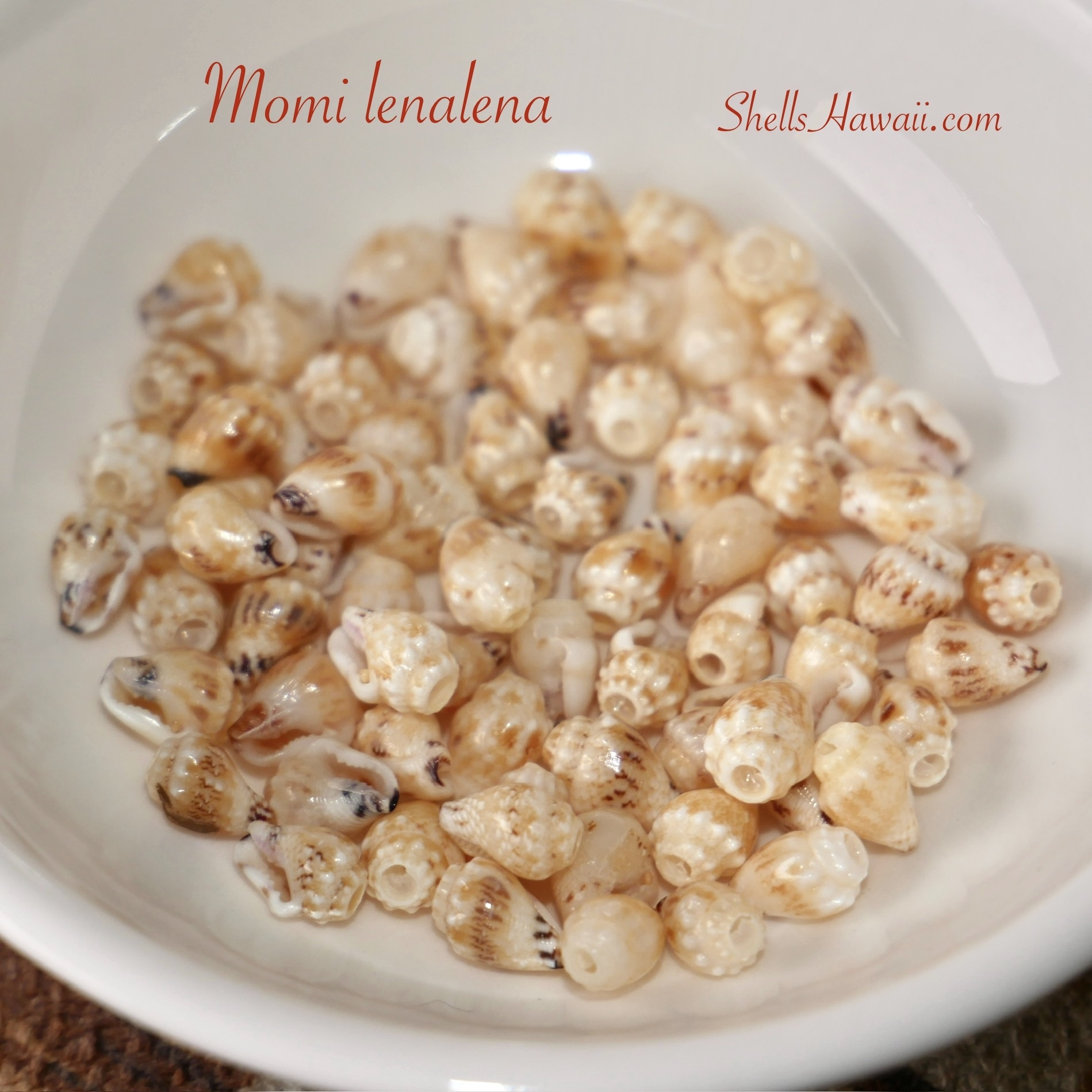
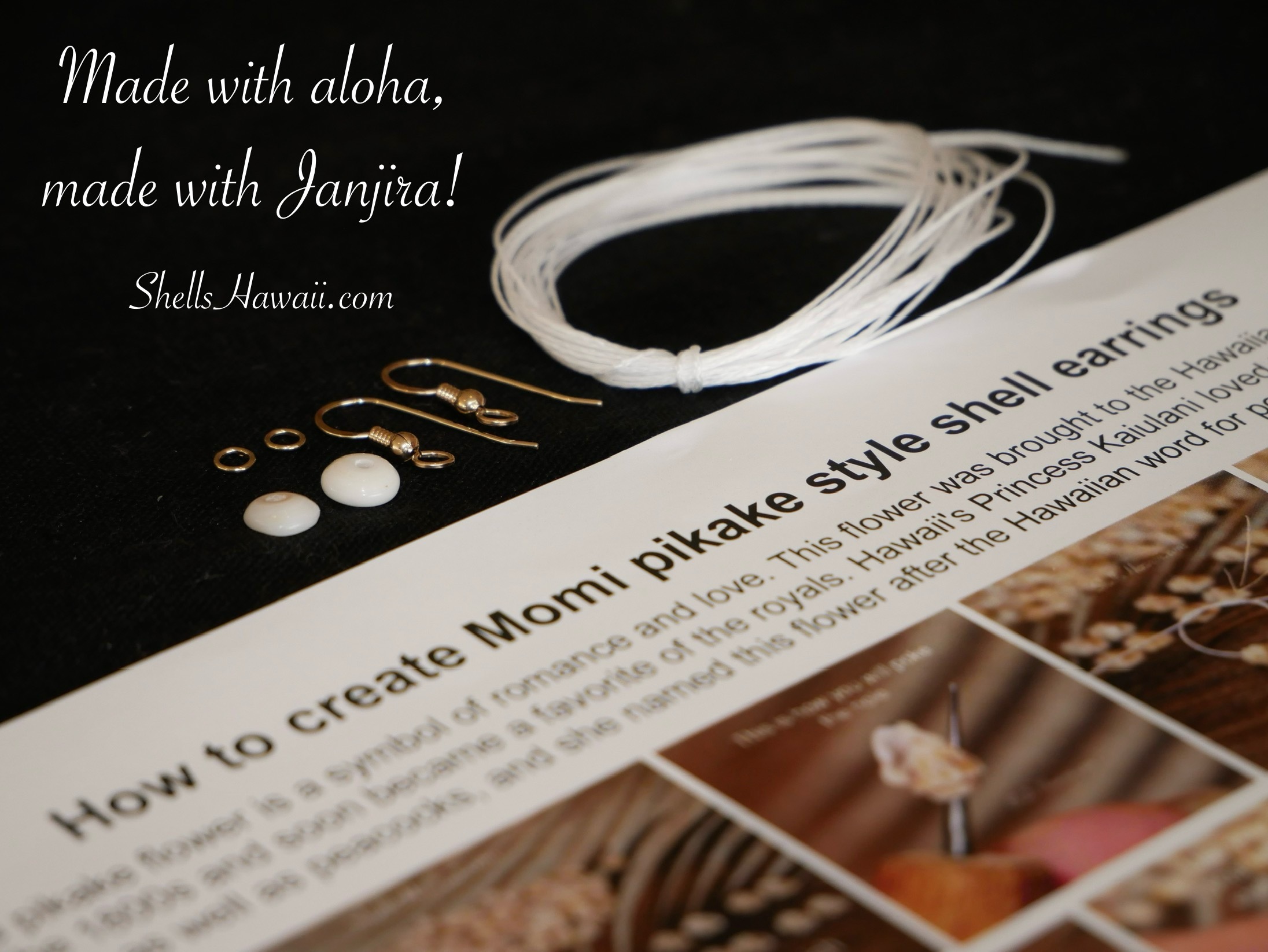
• Start by measuring one length of thread, then fold it in half to create two strands.
• Add one Momi shell (モミシェル) to each strand, letting them rest side by side.

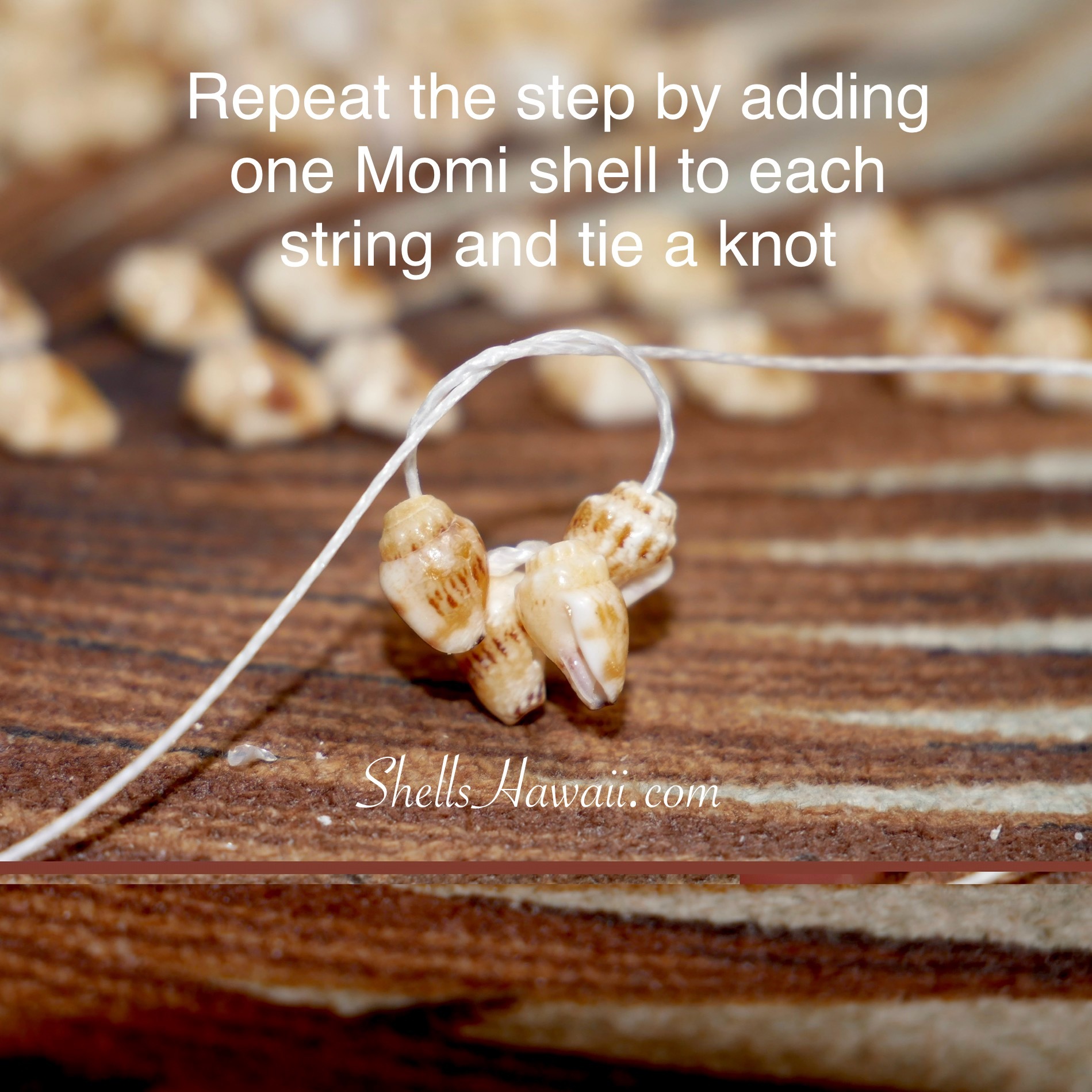
• Tie a gentle knot to secure them — that’s the rhythm: one shell on each side, then a knot.
• Repeat until the shells form a soft, floral flow.
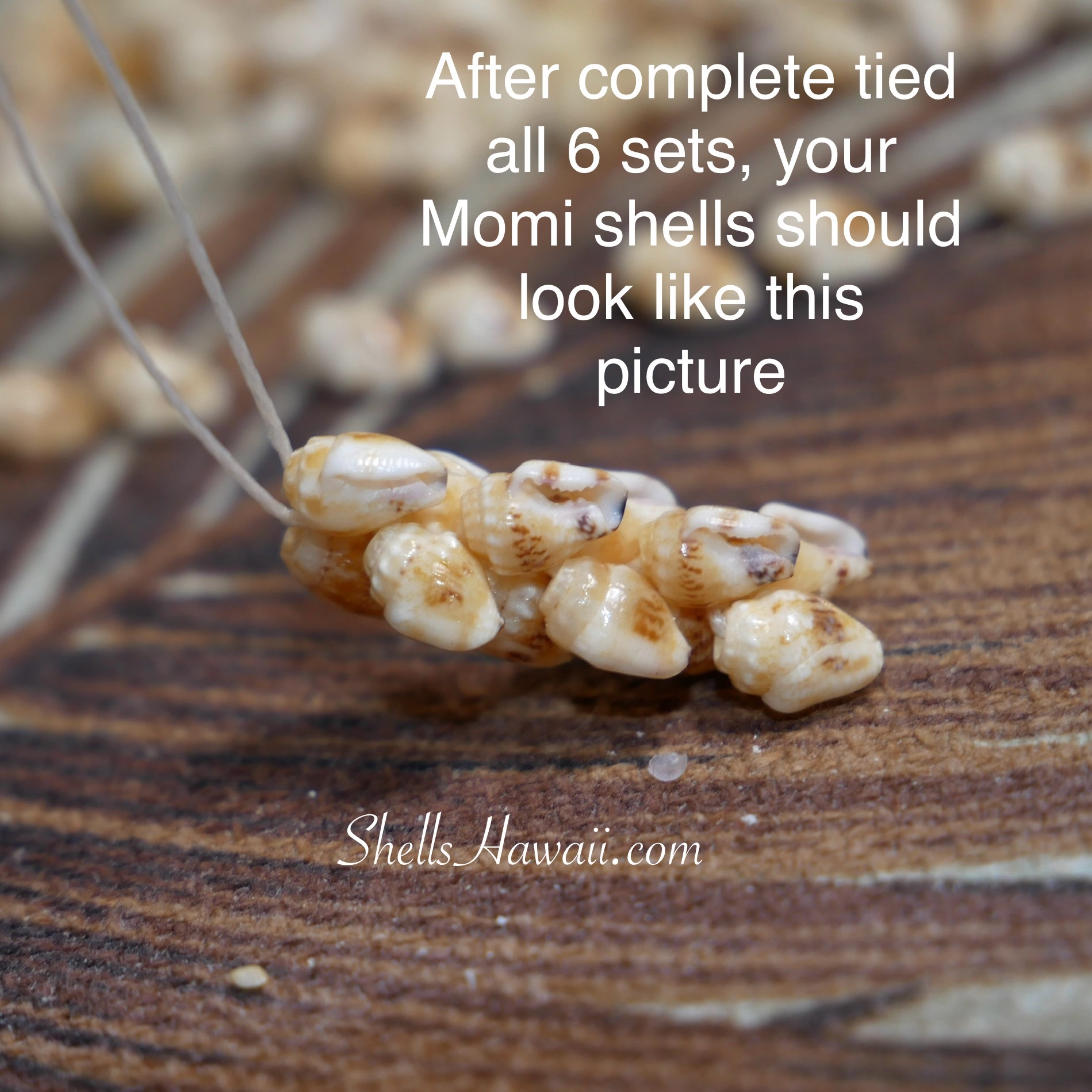
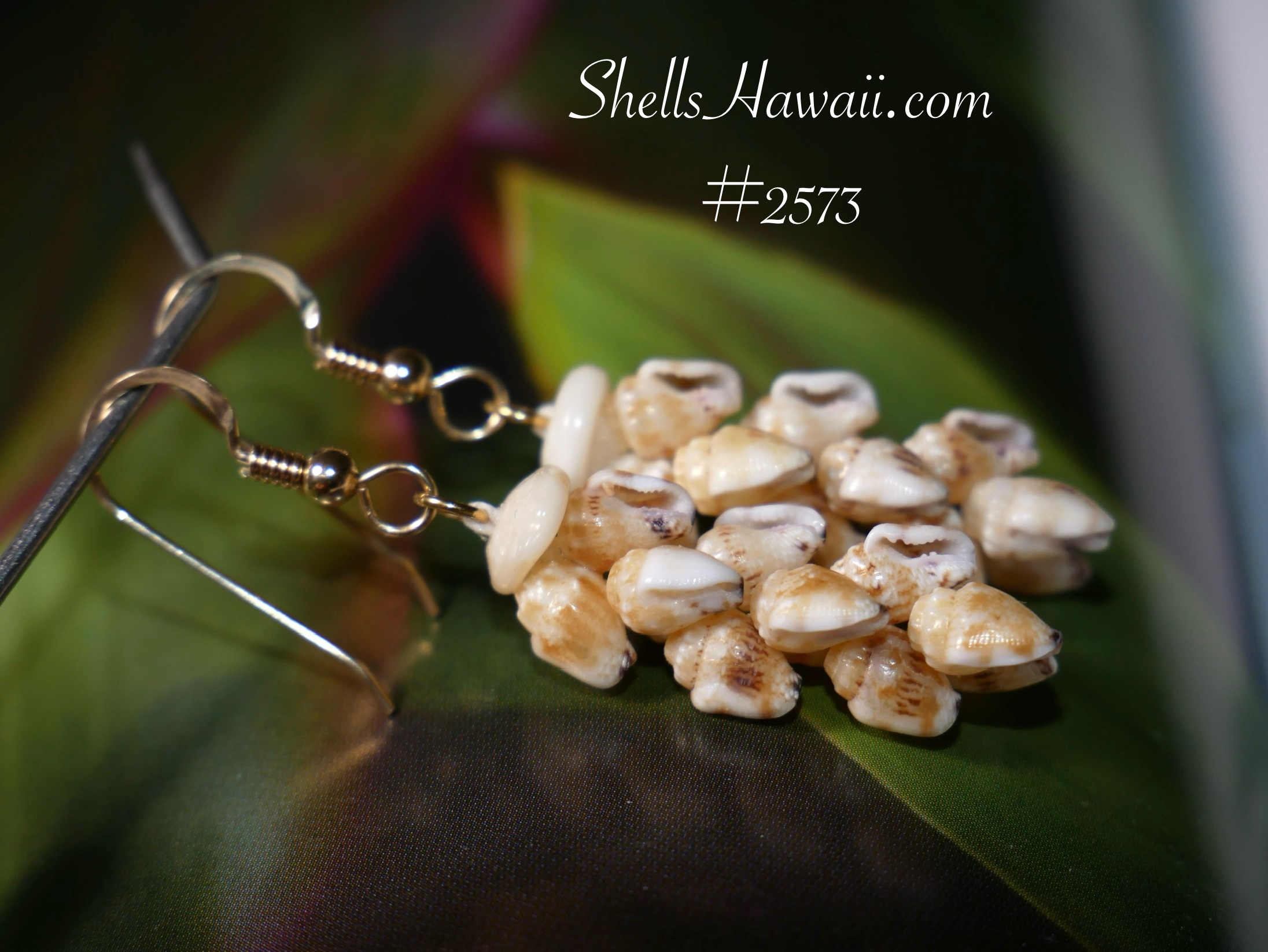
As you can see in the photos, the Momi shells are stacked straight, not twisted — that’s what gives the pattern its smooth, jasmine-like beauty.
✨ If you haven’t yet read my blog “What Are Momi Shells?” ›, it’s a great place to start learning about these creamy, elegant shells and why they’re so important in Niʻihau jewelry making.
If you’d like to try creating your own earrings, I offer Niʻihau Shell Kits that include genuine Niʻihau Momi shells (モミシェル) — perfectly prepared for beginners. Each kit comes with step-by-step instructions on how to make the Single Pīkake style, so you can experience the same rhythm, joy, and patience that go into every handcrafted piece. (link to be added)
➡️ Looking for ideas before you start?
Visit the Gift Guide › for inspiration or explore the Buyer’s Guide › for tips on choosing your first authentic Niʻihau shell jewelry piece with confidence.
✨ More Fun to Explore from Here ✨
Just like the jasmine flower that inspired its name, the Single Pīkake style carries a beauty that feels soft, natural, and unforgettable. It’s simple, yet full of life — and it’s the very beginning of understanding Niʻihau shell jewelry styles.
➡️ Next time, we’ll explore the Double Pīkake style — fuller, fluffier, and often what people picture when they hear “Pīkake.” I’ll show how it’s built, what makes it more advanced, and why it’s such a satisfying style to sew.
✨ Stay tuned — there’s plenty more to discover, and I can’t wait to share the next chapter with you.
 USD
USD

